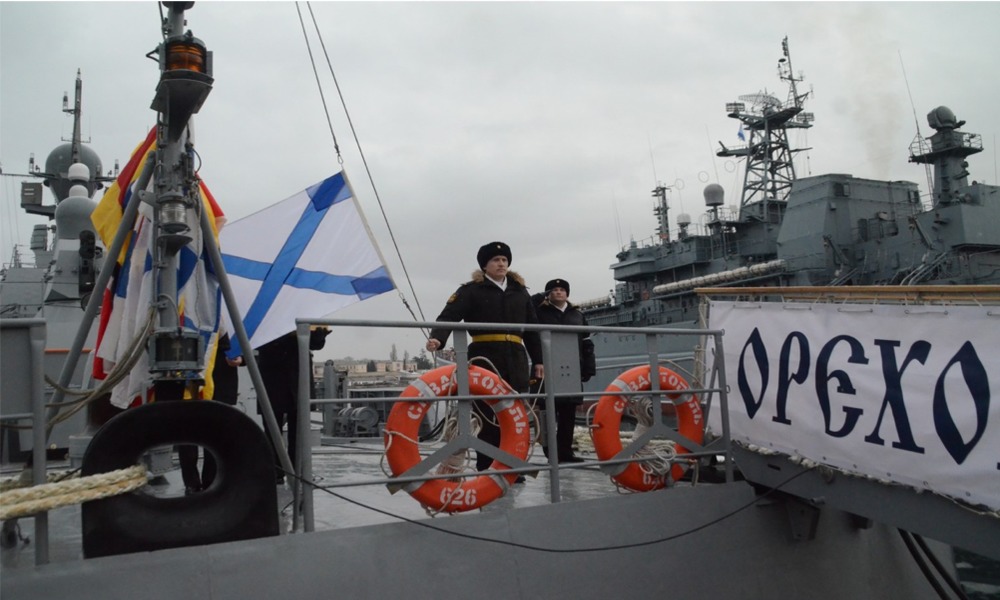Ukraine Monitor
Date: 20 December 2018
Crimea’s New Missiles
Almost immediately after Russia’s annexation of Crimea, Moscow started to deploy a large amount of modern weaponry and thousands of troops to the region. In addition, it was possible to form a large independent military unit.Once turned into a fortress, the Crimean peninsula managed to provide Russia with a certain advantage in central and eastern parts of the Black Sea.

In such a manner, its military capabilities pose threat to Ukraine, Romania, and Georgia. In the long run, the region should become a key element of Russia’s expansion to the Balkans and the Mediterranean Sea. The Russians took advantage of the so-called Kerch Strait incident to send more missile systems and naval ships to the Crimea in several days. In response to Moscow’s aggression, Ukraine initiated a resolution draft, adopted by the UN General Assembly.
The document stated that the presence of Russian troops in Crimea is contrary to the territorial integrity and sovereignty of Ukraine. It also condemned the Russian Federation’s construction and the opening of the Kerch Strait bridge. As many as 66 countries voted in favor of the document, 19 voted against it and 72 abstained, a fact that may come as a surprise. Naturally, the Kremlin spokesman stated that Russia does not agree with the United Nations General Assembly’s resolution. On December 19, Russia conducted military air defense drills using the S-400 systems, Black Sea Fleet command has informed. They were covered by crews of other missile systems, including a Pantsir-S battalion. And yet the S-400 batteries and the Pantsir-S are not the only missile systems in the Russia-occupied Crimea.
Following the incident, media reported on Russia’s weapons deployed to the peninsula. Russia seized and opened fire on three Ukrainian naval ships along with their 24 crew members in the Kerch Strait. Moscow has accused them of illegal border crossing. Only three days later, it was informed that Russia had relocated a Bal anti-ship missile system to the peninsula. Armed with Kh-35 anti-ship cruise missiles, it has the capability to block access to the sea. The Bastion systems, which had previously been deployed to Crimea, provide Russian with an ability to strike targets at a distance of more than 300 kilometers from the coast. Yet it is not their only aim, the more so that the Russian army managed to perform successful tests of the Bastion coastal defense systems to attack land based targets. This basically means that the battalions may be deployed to reach Ukrainian territory in the event of war. Unofficial reports from November 28 were confirmed by a statement by the Black Sea Fleet issued on December 3, according to which it was planned to conduct military drills with the participation of Bal and Bastion crews.
On November 29, Moscow announced the deployment of an S-400 anti-aircraft missile system in the Dzhankoy airbase in Crimea (20 kilometers from the border with mainland Ukraine). Furthermore, the S-400 is capable of destroying targets up to 400 kilometers away and flying at an altitude of up to 30 kilometers. This is the fourth battalion that has been put into active service in Crimea; previously, the S-400 air defense missile systems had been deployed to Feodosia, Sevastopol and Yevpatoria. Also on November 29, Russia announced that a Voronezh-M early-warning radar will be installed in the peninsula in 2019. The Voronezh-M is capable of detecting ballistic missile launches and the flight of cruise missiles up to 3,500 kilometers away.
On November 30, Russia relocated to Crimea another division of the Pantsir-S1 self-propelled medium-range surface-to-air missile systems as well as a considerable number of the Su-27 and MiG-29 fighter aircraft. This is yet another stage of increasing the tactical-operational capabilities of Russian forces located in Crimea. Russia previously began the modernization of the Belbek airport – which, upon completion, is expected to become capable of receiving strategic bombers such as the Tu-95, Tu-160, and Tu-22M. Also on November 30, Vice-Admiral Alexander Moiseyev, the commander of the Russian Black Sea Fleet, stated that next year, the fleet will receive three new vessels equipped with Kalibr cruise missiles. A week later, on December 7, a brand-new Orekhovo-Zuevo ship was deployed to the Black Sea Fleet base of Sevastopol. The Buyan-class corvette is equipped with Kalibr anti-ship and land-attack cruises missiles. The Orekhovo-Zuevo vessel is the first ship armed with Kalibr missiles to be permanently stationed in Crimea’s Sevastopol.
All texts published by the Warsaw Institute Foundation may be disseminated on the condition that their origin is credited. Images may not be used without permission.














